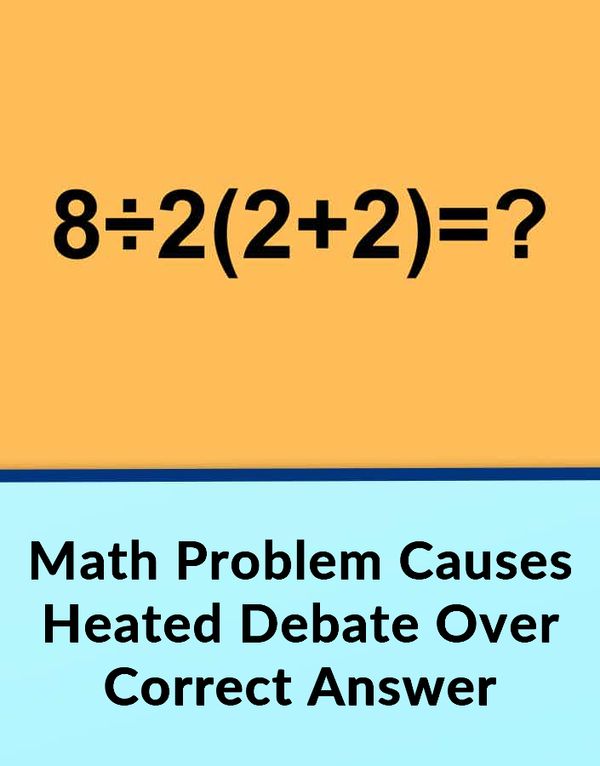Divided Opinions at Popular Mechanics
Even the editors at Popular Mechanics, a renowned lifestyle magazine, found themselves divided on this infamous math conundrum. In their official workplace chatbox, they passionately deliberated and tried to unravel the mystery behind the correct answer.
One editor argued for the practical approach taught in schools—following the “PEMDAS” rule, which stands for “Parentheses, Exponents, Multiplication, Division, Addition, and Subtraction.” According to this rule, equations should be solved in the order of operations mentioned in the acronym—first parentheses, then exponents, and so on, from left to right.
Applying this to our problem, the editor demonstrated that we should tackle the 2 + 2 within the parentheses first, resulting in 4. Thus, we are left with 8 ÷ 2 x 4. Following the left-to-right order, division should be solved before multiplication, resulting in a quotient of 4. Therefore, 4 x 4 gives us the answer of 16. However, this interpretation faced fierce opposition, including skeptics who are well-versed in mathematics.
The Case for 1
The other camp of Popular Mechanics editors argued that the answer is 1. They also adhered to the “PEMDAS” rule but approached it differently. They agreed that the 2 + 2 within the parentheses should be solved first but treated the sum as if it were within parentheses as well—8 ÷ 2(4). According to their interpretation, a multiplication operation within parentheses takes precedence over division, even if it’s on the leftmost side of the equation.
Expert Opinions
As the debate raged on and consumed the internet’s attention, mathematicians and scientists waded into the fray. Mike Breen, from the American Mathematical Society Public Awareness Office, explained that based on the order of operations, the correct answer is indeed 16. However, he acknowledges that the way the equation is written introduces ambiguity.
“In math, there are often ambiguities. Mathematicians strive to establish precise rules. By strictly following the order of operations, you get 16, but I wouldn’t scold someone for saying 1,” Breen admitted.
Yet, despite Breen’s perspective, some people remain unconvinced. Seeking further clarity, the other group of magazine editors consulted with Rhett Allain, a Physics Professor from Southeastern Louisiana University, whom they believed had finally resolved the debate.
Allain clarified, “This is a matter of convention. Just like spelling the color as ‘gray’ or ‘grey,’ there are different conventions. Although we have established conventions for writing math equations, we can still understand what’s going on.” Allain suggested that the question should have been correctly written as 8/(2*(2+2)), which would yield the answer of 1.
The Ongoing Debate
So, dear readers, the question remains: 16 or 1? The battle of interpretations continues to captivate minds and underscore the intriguing world of mathematics.
